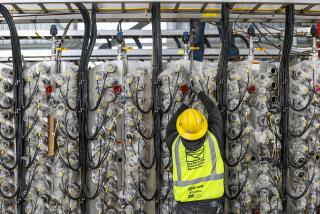Oil Companies Embrace EPA’s Plan for Cleanup at McColl Site
- Share via
FULLERTON — The oil companies responsible for one of the nation’s most dangerous toxic waste sites said Thursday that they will comply with a U.S. Environmental Protection Agency plan to clean up the site.
The announcement from the coalition of oil companies, known collectively as the McColl Site Group, comes two weeks after the EPA revealed an $80-million remedy that calls for containing the waste on site.
“The McColl Site Group is eager and excited to begin this important task,” said Bill Duchie, a spokesman for the companies--Shell, Texaco, Unocal and Arco.
Since 1983, the 22-acre McColl site, a World War II-era aviation fuel dump, has been identified on the federal Superfund list as one of the country’s most hazardous waste sites. For years, cleanup plans have been tangled in bureaucratic, technical and legal problems.
Local residents, who have been frustrated by the cleanup delays, were pleased by the EPA plan and the oil companies’ acceptance of it.
“Now we can see the end of the tunnel where they can finish up and present to the community a livable, viable site,” said Rich Olquin, who lives near the waste site.
Under the EPA plan, none of the material will be removed. Instead, the contaminated soft material will be solidified to stop tarry material from oozing to the surface, and underground walls and a cap will be built to hold it all in place.
Duchie said Thursday that the cleanup could take four to nine years. The first step in the process, he said, is a two-year study of the site that would analyze the characteristics of 12 different waste pits on the parcel and determine how best to contain them. Crews could start work within weeks, he said.
“The overall schedule for accomplishing the work is extremely aggressive,” Duchie said during a press conference held across the street from the dump site. Also attending the press conference were state Sen. John R. Lewis (R-Orange) and an aide to Rep. Ed Royce (R-Fullerton).
The dump was used from 1942 to 1946 for disposal of petroleum refinery wastes and contains 100,000 cubic yards of contaminated material. The acidic sludge contains large amounts of sulfur and cancer-causing hydrocarbons such as benzene.
More to Read
Sign up for Essential California
The most important California stories and recommendations in your inbox every morning.
You may occasionally receive promotional content from the Los Angeles Times.










